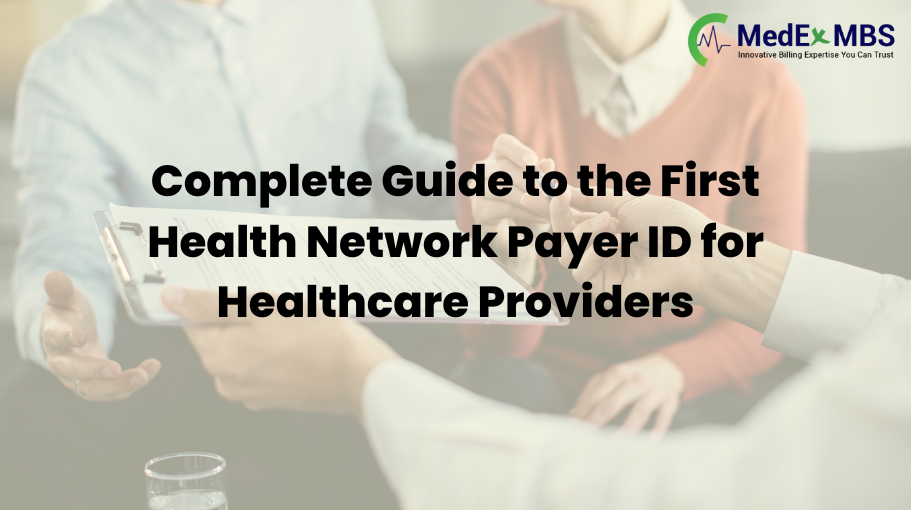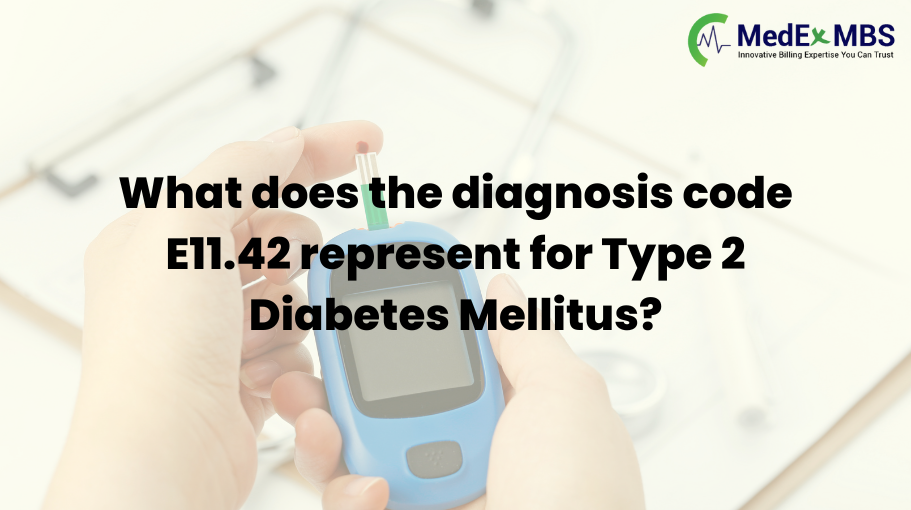Complete Guide to the First Health Network Payer ID for Healthcare Providers

Electronic claims processing serves as the essential foundation of a healthcare practice’s revenue cycle. With over 4 billion healthcare claims processed annually in the United States, it is essential to use the correct payer ID to guarantee prompt payments. The FHNP ID acts as the key for providers to achieve efficient billing and minimize administrative burdens. Providers working in conjunction with First Health networks necessitate particular technical information to ensure that their claims are directed to the correct destination. This guide encompasses all necessary information, from the primary payer ID number to regional coverage differences, enabling medical billing professionals to confidently submit electronic claims. Key Points The network includes providers from First Health, First Choice of the Midwest, and Cofinity. Both Professional/1500 and Institutional/UB claims are accepted The network spans most US states with regional variations Overview The primary payer identification number for Health First Health Plans is 95019. Whether you are submitting Medicare claims or commercial insurance claims, this identification number ensures that your claims are sent to the appropriate processing center. The First Health network operates in accordance with HIPAA-compliant billing regulations and mandates the use of standard code sets, including ICD-10-CM for diagnoses and CPT/HCPCS for procedures. This compliance framework supports the processing of both primary and secondary claims, in addition to Electronic Remittance Advice (ERA). Technical Requirements All claims must adhere to the following requirements: Employ payer ID 95019 for Health First Health Plans Comply with HIPAA transaction standards Incorporate appropriate ICD, CPT, and HCPCS coding Follow AMA coding guidelines and Medicare policies Abide by Correct Coding Initiative (CCI) and Local Coverage Determinations (LCDs) The network also permits custom billing guidelines when standard rules are not applicable, particularly for complex medical situations, while still upholding compliance standards. Network Coverage and Provider Access The primary health network encompasses the majority of US territories, featuring regional differences that providers ought to be aware of. This network is composed of three essential elements: First Health, First Choice of the Midwest, and Cofinity providers. Geographic Coverage Breakdown Network Component Coverage Area Primary Focus First Health Most US states (with specific exclusions) Broad national coverage Cofinity Michigan State-specific network First Choice of the Midwest Idaho and Montana Regional Midwest coverage The secondary coverage encompasses the entirety of Alabama, specific counties in Florida, as well as other states that are not part of the primary network. This framework enables providers to utilize network resources regardless of their location. Provider Network Access This implies that patients with Curative coverage can consult First Health, First Choice of the Midwest, and Cofinity providers without any network limitations. This broadened access enhances patient choice and streamlines participation in the provider network. Claims Submission Requirements Healthcare providers must be aware of specific submission criteria to guarantee that claims are processed accurately. The network supports both Professional/1500 and Institutional/UB claims through the same payer ID system, thereby simplifying processes for multi-service providers. Professional Claims (1500 Forms) Professional claims necessitate: Payer ID 95019 in the appropriate field Provider NPI numbers CPT/HCPCS procedure codes ICD-10-CM diagnosis codes Patient demographic details Service date ranges Institutional Claims (UB Forms) Institutional submissions require: The same payer ID 95019 designation Revenue codes for facility services Bill type designations Principal and secondary diagnosis codes Discharge status when applicable Secondary Claims Processing The network facilitates the processing of secondary claims, allowing providers to submit claims when First Health acts as the secondary payer. This is particularly essential in situations involving Medicare supplements and the coordination of benefits. Providers must ensure that the primary payer information is thoroughly completed prior to submitting secondary claims to prevent any processing delays. Contact Information for Network Access Different inquiries related to the network necessitate distinct contact numbers to reach the appropriate support teams. Being aware of the correct number to call can significantly reduce hold times and enhance resolution efficiency. Special Benefits and Programs Curative members receive enhanced benefits that set the First Health Network apart from conventional insurance offerings. These programs are advantageous for both patients and providers. Member Benefits Structure Curative members enjoy: $0 deductible for in-network services $0 copay for covered services Enhanced prescription coverage Broadened access to provider networks Baseline Visit Requirements Benefits are activated after a Baseline Visit that occurs within 120 days of enrollment. This visit fulfills multiple purposes: Health Evaluation: A comprehensive assessment of the member’s health condition. Care Coordination: Establishing primary care relationships Benefit Activation: Initiating enhanced coverage options Prescription Access: Allowing access to preferred prescription coverage Providers are encouraged to arrange these visits for new Curative members to ensure they receive full access to benefits. The baseline visit also opens avenues for discussions on preventive care and health education. Employer Group Services The network is involved in employer group services, offering added value through partnership arrangements. These services typically encompass: Custom benefit designs Integration of wellness programs Resources for employee health education Specialized provider networks Comprehending these programs enables providers to better assist members of employer-sponsored plans and can lead to increased patient volume through group contracts. Frequently Asked Questions (FAQ) Q1. What is the FH ID? The payer identification number for Health First Health Plans is 95019. This should be used for all submissions of electronic claims. Q2. Which states are included in the First Health Network coverage? The network encompasses the majority of states in the United States, with specific exceptions such as Confinity in Michigan and First Choice of the Midwest in Idaho and Montana. Q3. What types of claims are eligible for submission? Claims can be submitted in both Professional/1500 and Institutional/UB formats. Secondary claims and ERA processing are also supported. Q4. Are secondary claims accepted? Yes, both secondary claims and ERA are accepted. Q5. What is the process for verifying patient eligibility? You can verify patient eligibility using the standard method with payer ID 95019, or you may call the network phone number for manual verification if electronic systems are unavailable. Providers who effectively utilize the FHNP ID system can enhance their revenue
What does the diagnosis code E11.42 represent for Type 2 Diabetes Mellitus?

The E11.42 code relates to type 2 diabetes mellitus that is associated with diabetic polyneuropathy as defined in the ICD-10 classification. What you will learn here: The E11.42 code specifically designates type 2 diabetes mellitus accompanied by diabetic polyneuropathy, thereby guaranteeing accuracy in both treatment and documentation. Symptoms associated with diabetic polyneuropathy encompass numbness and pain in the extremities, necessitating diagnostic procedures such as nerve conduction velocity tests. Managing the E11.42 code requires a comprehensive approach that includes medication, lifestyle modifications, and possibly insulin to achieve optimal patient outcomes. What is the E11.42 Code? The E11.42 code is a component of the ICD-10 classification system, utilized to identify type 2 diabetes mellitus with diabetic polyneuropathy. This condition signifies nerve damage resulting from diabetes, which can manifest in various symptoms. The E11.42 code serves not merely as an identifier but as a designation for a specific condition that demands targeted treatment and management. By accurately identifying this complication within the broader context of diabetes-related issues, the E11.42 code guarantees that patients receive appropriate care. It also facilitates precise documentation, which is vital for treatment planning and insurance reimbursement. Definition and Classification The E11.42 code is categorized within the ICD-10-CM classification system, a global standard for diagnosing and coding diseases and conditions. More specifically, it falls under the E08-E13 category, which encompasses various forms of diabetes mellitus. Understanding this classification system is essential for recognizing the type of diabetes mellitus and its associated complications, particularly diabetic polyneuropathy. In the ICD-10-CM, the E11.42 code is classified under endocrine, nutritional, and metabolic diseases, making it pertinent to metabolic disorders. This specific classification of diseases ensures that healthcare providers can accurately diagnose and treat patients, highlighting the importance of maintaining clear and detailed medical records. The Significance of Documentation Accurate documentation is essential for effective healthcare. The identification of type 2 diabetes mellitus accompanied by diabetic polyneuropathy requires a blend of physical assessments and specific diagnostic tests. Inadequate or erroneous documentation may result in improper billing, mismanagement of treatment strategies, and denial of claims. The E11.42 code must be applied with a high degree of specificity to the patient’s condition. This entails a clear definition of terms such as ‘uncontrolled’ diabetes and the establishment of the connection between diabetes and its complications. Such meticulous documentation guarantees that patients receive appropriate care and that providers can substantiate the medical necessity of treatments for insurance purposes. Symptoms and Diagnosis of Type 2 Diabetes Mellitus with Diabetic Polyneuropathy Type 2 diabetes mellitus with diabetic polyneuropathy is a condition characterized by various symptoms that significantly impact patients’ daily lives. Understanding these symptoms and the diagnostic processes is vital for effective management. Common Symptoms The prevalent symptoms of type 2 diabetes mellitus with diabetic polyneuropathy include numbness, tingling, and pain in the extremities. These symptoms arise from nerve damage and can greatly hinder a patient’s capacity to perform daily activities. Diabetic autonomic neuropathy may lead to gastrointestinal issues, bladder dysfunction, and cardiovascular irregularities. In severe instances, these symptoms can escalate to exercise intolerance, resting tachycardia, and other complications affecting multiple organ systems. Early recognition of these symptoms can facilitate timely intervention and management, thereby enhancing patients’ quality of life. Diagnostic Procedures The identification of type 2 diabetes mellitus accompanied by diabetic polyneuropathy requires a blend of physical assessments and specific diagnostic tests. Physical examinations include reflex tests aimed at assessing neurological function and identifying any abnormalities. One of the primary diagnostic tools is the assessment of nerve conduction velocity, which evaluates the speed and strength of signals transmitted through the nerves. These assessments are crucial for determining the degree of nerve damage and for accurately confirming the presence of diabetic polyneuropathy, thereby facilitating precise coding with E11.42. Treatment Options for Patients with E11.42 Code Managing type 2 diabetes mellitus accompanied by diabetic polyneuropathy necessitates a comprehensive approach. Treatment alternatives encompass medications, lifestyle modifications, and advanced therapies, all of which play a significant role in alleviating symptoms and enhancing patient outcomes. Medications typically serve as the initial line of defense against the pain and discomfort associated with diabetic polyneuropathy. Pregabalin and duloxetine are the only FDA-approved medications specifically for painful diabetic polyneuropathy. These drugs, along with alternatives such as gabapentin and amitriptyline, are effective in managing neuropathic pain. Antidepressants like duloxetine can also be beneficial for patients without depression, underscoring the versatility of these medications. They are essential for enhancing the quality of life for individuals suffering from chronic pain and discomfort. Lifestyle Changes Lifestyle modifications are crucial in managing type 2 diabetes and its associated complications. A well-balanced diet that includes vegetables, fruits, and whole grains can assist in maintaining stable blood sugar levels and minimizing the risk of additional complications. Engaging in regular physical activity is equally important. A minimum of 150 minutes of moderate exercise each week can enhance overall health, improve insulin sensitivity, and facilitate better management of diabetic polyneuropathy symptoms. Implementing these lifestyle changes can significantly impact a patient’s well-being and their ability to control diabetes. Advanced Therapies For certain patients, advanced therapies such as insulin therapy may be essential, particularly when oral medications alone fail to control blood sugar levels. Insulin therapy is instrumental in achieving optimal blood glucose regulation, which is vital for preventing additional complications and managing diabetic polyneuropathy. Tailored treatment plans incorporating insulin therapy can significantly enhance patient outcomes and offer a more holistic approach to managing type 2 diabetes alongside diabetic polyneuropathy. Complications of Type 2 Diabetes and Diabetic Polyneuropathy Type 2 diabetes accompanied by diabetic polyneuropathy can result in numerous complications, each of which must be addressed to ensure the best possible outcomes for patients. These complications can generally be classified into neurological, vascular, and other specified categories. Diabetic Neurological Complications Diabetic neuropathy, a prevalent complication linked to diabetes, entails considerable nerve damage that may present as pain, tingling sensations, and
